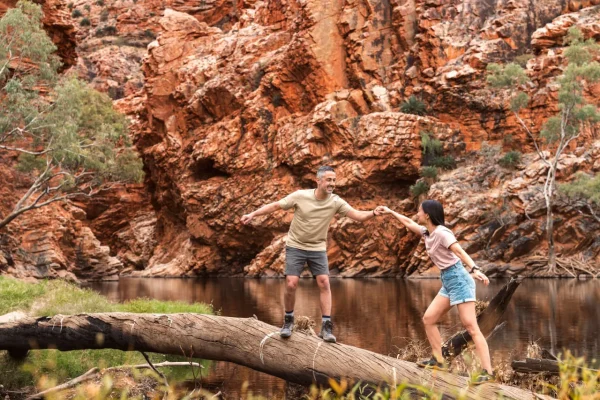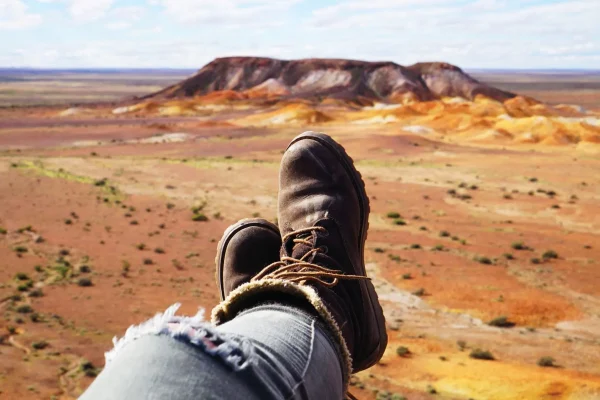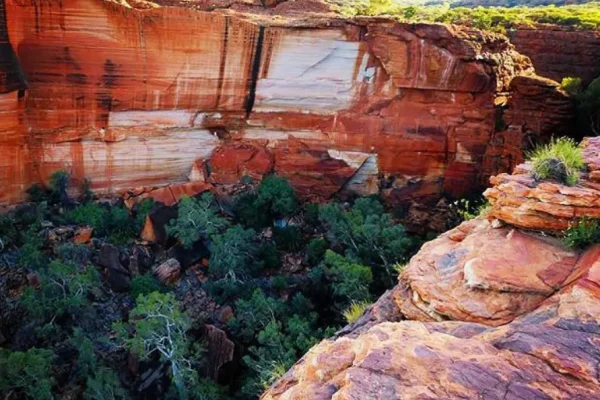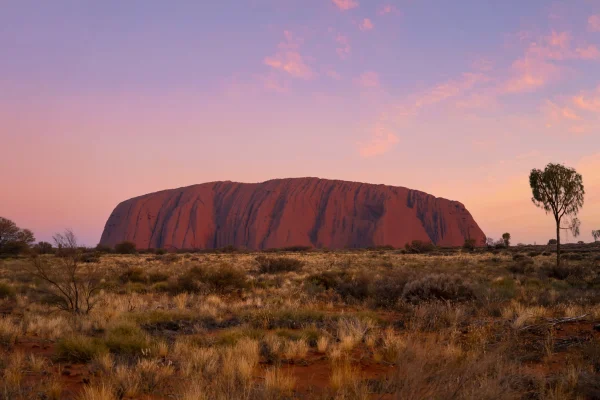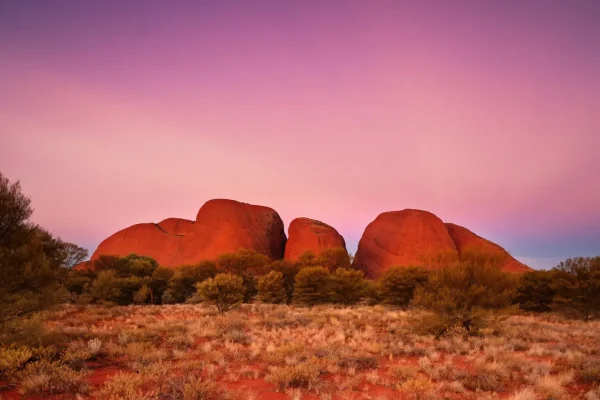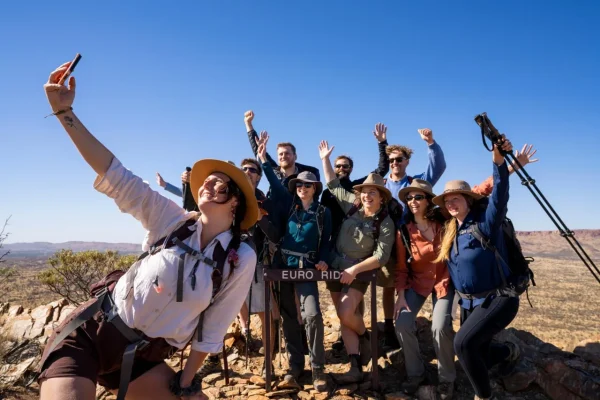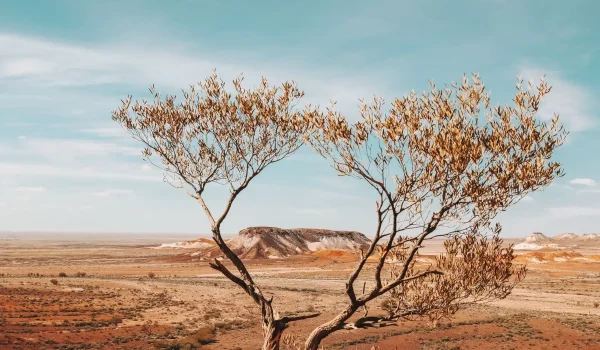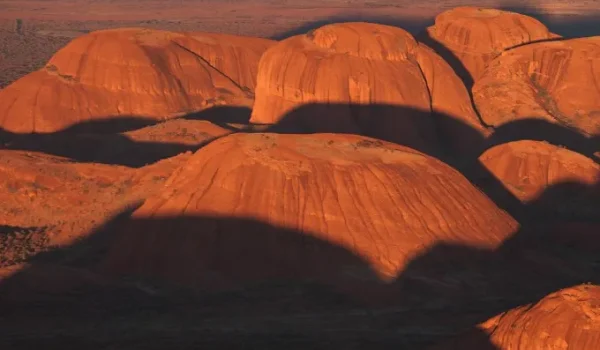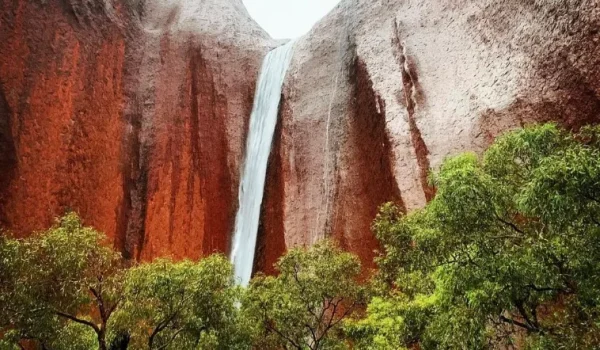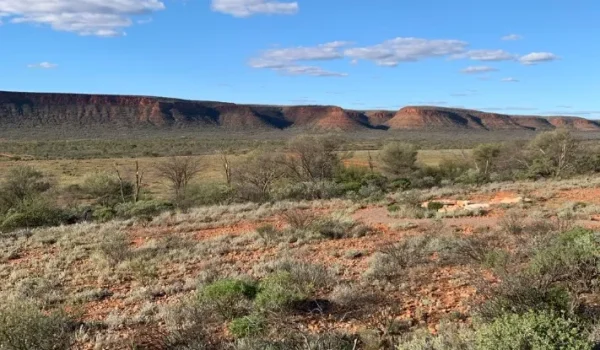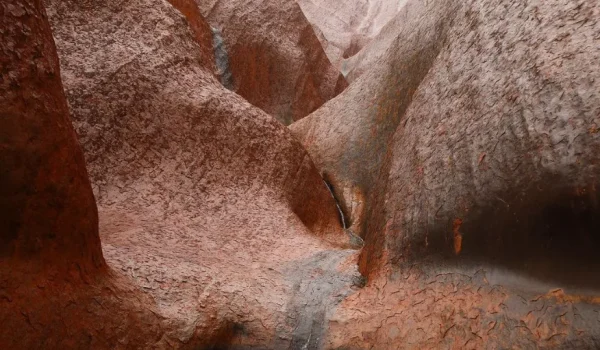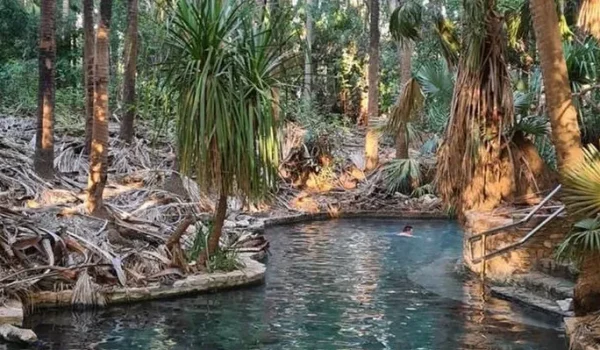Travelers looking for a unique natural spectacle should check out the fantastic Devil’s Marbles in the Northern Territory. The Karlu Karlu (traditional name) are incredible granite boulders and rock formations scattered along the Stuart Highway, set at great angles and seemingly defying the laws of gravity.
Immerse yourself in the culture and history of Uluru that showcases the best of this stunning destination.
Devils Marbles Conservation Reserve
Explore the ancient granite boulders that appear to have fallen from the blue sky of the Barkley Tablelands, 95km south of Tennant Creek.
Hike through Carla Carla/Devil’s Marbles, where you’ll see precariously balanced boulders that defy gravity scattered across a wide, shallow valley.
The Devil’s Marbles is a sacred site called Karlu Karlu in the language of its traditional owners, the Warumungu people. Formed over millions of years, they continue to crack and crumble, offering a unique view on each visit.Often included in extended Uluru trips, this remarkable site adds cultural and geological depth to any Red Centre adventure.
Slow down and enjoy exploring the most famous attraction of the region. Follow the trails and learn from the information panels how the granite formations have resisted the erosive forces of wind and rain, unlike the surrounding sandstones. This fascinating geological wonder can be explored via a short guided walking trail and information panels.
Karlu Karlu Nature Reserve/Devil’s Marbles offers a picturesque bush campsite with fireplaces. Stay here overnight to watch the sunset, the most spectacular time to explore the area. There is a camping fee, and tent sites must be booked online before arrival.
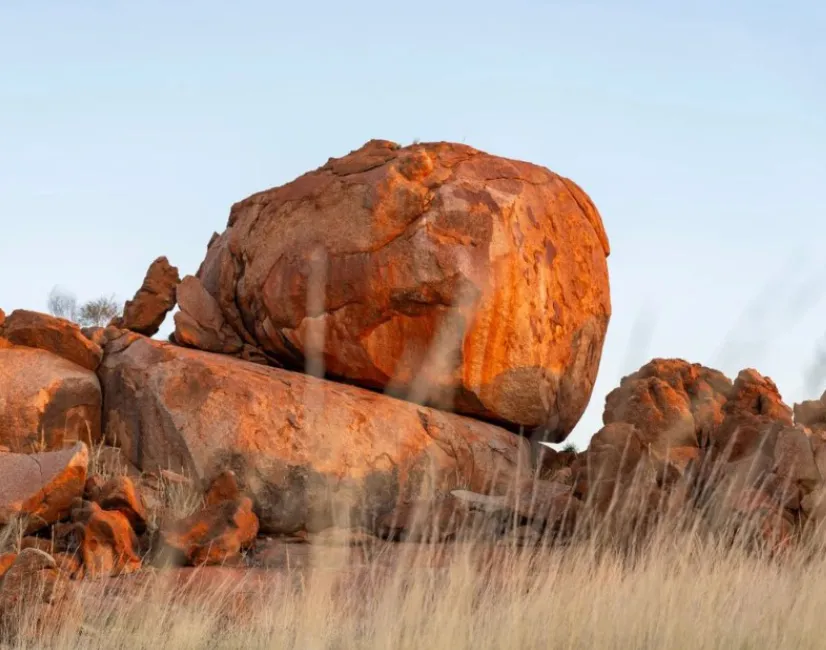
Cultural significance
The marble cliffs have cultural significance for the Alayawarre people, but they are also a meeting place for three other language groups: the Kayete, Warumunga, and Warlpiri. They care for the land and have a spiritual connection to the rocks. Alayawarre elders regularly visit the area to let younger generations know their culture. Traditionally, the marble cliffs were the only park area where men and women could gather food, hunt, and heal. The elders went to other dangerous parts of the park only for ceremonial purposes. In fact, according to tradition, the camp itself was strictly off-limits to most locals.
There are many spiritual and dreamlike stories associated with the marbles. The traditional owners consider many of them sacred. With the increase in the number of tourists, a misconception has spread that the Alayawarre believe the marbles are the fossilized eggs of the creator, the rainbow serpent. However, this is not the case. Many traditional stories are not for those who are uninitiated. The general public can hear the following story told by the Alayawarre people.
Aranj, the Devil Man, came to this region from Aileparrantenje. During his journey, he made himself a hair belt (an object worn by initiates). Aranj threw tufts of hair on the ground, twisting them into ropes. These bundles became the blocks we can observe today. On his way back to Eileparranteni, he spat on the ground. His spit turned into stones in the middle of the reserve. Eventually, Aranj returned to his place of origin, Eileparrarenten.
Today, Eileparrarenten is the name of a hill with two peaks to the east of the reserve. The Alayavarri believe that Aranj is still there.
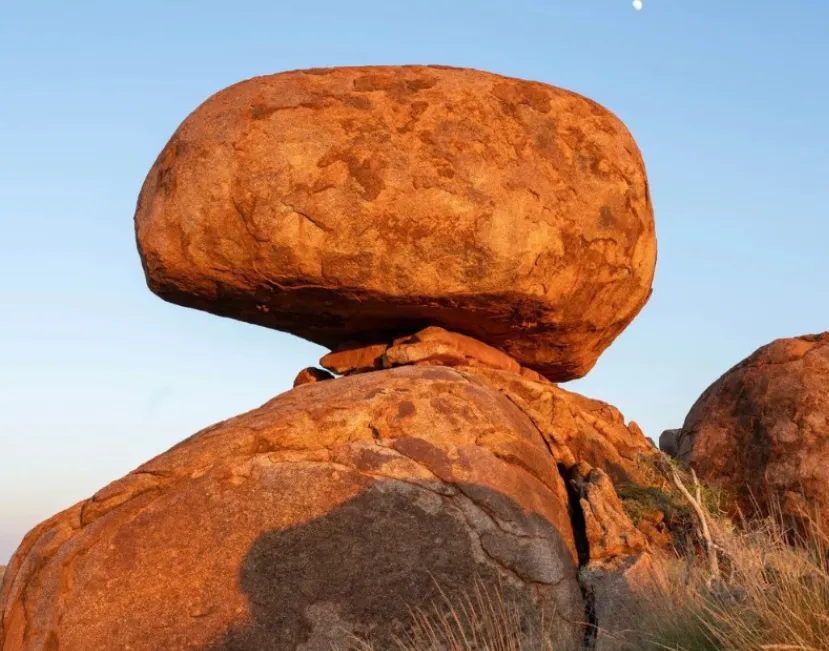
Marble removal
For Aboriginal people, marble is synonymous with extraordinary power. Traditional owners believe damaging, altering, or removing blocks can have fatal consequences. Despite this, in 1953, one of the blocks was removed without consultation. Transported to Alice Springs, it stood on the grave of the founder of the Royal Flying Doctor Service, John Flynn.
After 45 years of suffering and activism, the stone was returned to the Alayawarre people. A new stone from the Alice Springs region was installed in its place. The Arrente people chose the new stone, which was removed with their permission.
Today, Northern Territory law protects it as a registered sacred site. The site was returned to its traditional owners in a historic ceremony in 2008. Devil’s Marbles is open to the public every day of the year. Although there is no legal ban, the traditional owners ask visitors not to climb the rocks.
Exploring the Devil's Marbles
There is no set route around the Devil’s Marbles. It is simply a network of independent routes that lead around the eastern part of the reserve. Walking along the trails, you will learn more about this geological wonder, including how it was formed and has withstood the elements. Don’t pass by the live events program if you are there between May and October. The park rangers organize it to celebrate their Territory Parks Alive Program.
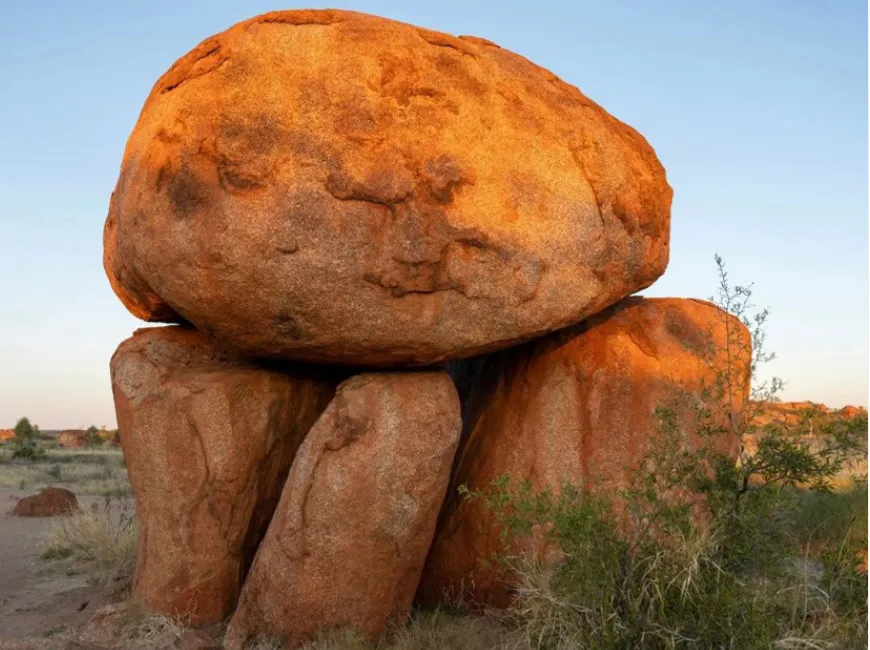
FAQ
What are the Devil’s Marbles (Karlu Karlu)?
The Devil’s Marbles are giant granite boulders scattered across a wide valley in the Northern Territory, formed over millions of years through erosion.
Why are the Devil’s Marbles culturally significant?
Known as Karlu Karlu to the Warumungu people, the site is sacred and holds many Dreamtime stories. It’s also a meeting place for several language groups, including the Kayete, Warlpiri, and Alyawarre.
Can you climb the Devil’s Marbles?
Although there is no official ban, traditional owners request visitors not to climb out of respect for the site’s sacred significance.
What happened to the marble taken in 1953?
One boulder was removed without consultation to serve as a memorial in Alice Springs. After 45 years of activism, it was returned to the Alyawarre people, and a replacement stone from the Alice Springs area was installed with Arrernte approval.
What can visitors do at the Devil’s Marbles?
Visitors can explore walking trails, view interpretive panels, camp at the bush campground, and enjoy the spectacular sunset when the boulders glow red and orange.

